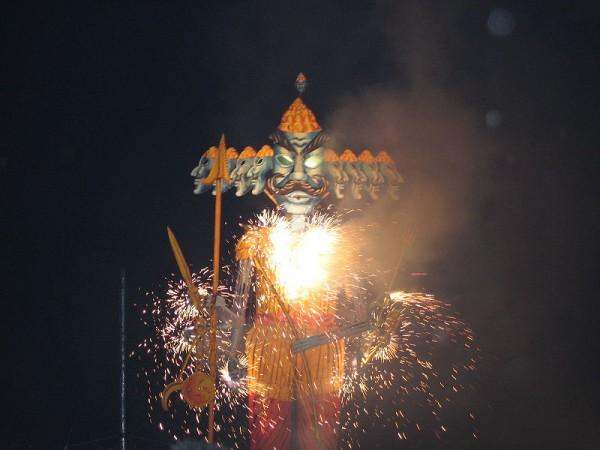
Dussehra (Dasara) also known as Vijaya Dashami, Dashain or Maha Navami, is a famous Hindu festival that seeks to mainly celebrate the victory of good over evil as propounded by the Hindu epic Ramayana.
It is a holiday celebrated with much pomp and pageantry in India as well as many other countries such as Nepal and Bhutan and places with Hindu diaspora. The festivity is marked on the 10th day of the bright half (Shukla Paksha) of the month of Ashvin, also known as Ashwayuja, according to the Hindu calendar.
Dussehra falls on Friday, 3 October 2014.
Here are five interesting things to know about how the festival originated and what its backgrounds and symbols are:
Triumph of good over evil:
The festival of Dussehra has been considered to symbolise the celebration of good over evil while marking the Hindu god Rama's victory over the demon king Ravan. The epic Ramayana, which is one of the most popular books emanating from the Indian subcontinent, tells the mythical and symbolical story of Lord Rama winning Sita for his wife in a dramatic competition organized by Sita's father King Janaka. He was the only one to lift a heavy bow to win Sita as his wife, but she was soon carried off by Ravana, the demon king of Lanka.
Ravana's Role:
Ravana plays an important role in the Ramayana, and is considered to be the face of evil. He had a sister known by the name of Shoorpanakha. She fell in love with brothers Rama and Lakshamana and wanted to tie the knot with either of them. Lakshamana refused to marry her while Rama could not as he was already in nuptial ties.
Shoorpanakha's Nose and Ears:
The epic continues the story of how the evil-minded Shoorpanakha threatened to kill Sita in order to be able to marry Rama. This angered the short-tempered Lakshamana and he cut off Shoorpanakha's nose and ears.
The event then angered Ravana who kidnapped Sita to take revenge for his sister's injuries. This resulted in a long episode of a battle between Rama's troops – which consisted of a huge army of monkeys of god Hanuman – and Ravana. Sita was ultimately rescued.
Mahabharata:
The Mahabharata is considered to be another series of Hindu myths that play a role during Dussehra. According to the epic, in the thirteenth year of their exile, the Pandavas had to live in hiding and Arjuna the Pandav prince, disguised himself as a eunuch called Brihannala. He hid his celestial weapons in a Vanni tree (or Shami tree).
After a year, when their period of concealment was over, he retrieved his weapons on the day of Dussehra and the Pandava brothers worshipped the weapons along with the Vanni tree. Even to this day, the Vanni tree is worshipped in Mysore.
Kautsa's Story:
Another legend tells a story of an obedient disciple of Rishi Varatantu. The disciple did everything he could to acquire the 140 million gold coins his Guru had asked as 'gurudakshina' (Gift from a disciple to a teacher).
When he asked King Raghu, who was famous for his generosity, for the money, the kind approached Lord Indra who in turn asked Kuber, the god of wealth, to create a shower of gold coins around King Raghu's city of Ayodhya.
On the day of Dussehra, the gold coins were distributed to the poor people of the village, which still holds much importance in Ayodhya with people looting the leaves of the Apati trees and presenting them to each other as gold.

















